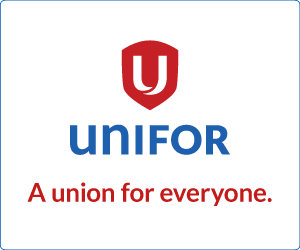Private Pretensions
The Battle for Canada’s Universities
In our day, all that seems to remain of the historical struggle between the competing visions of socialism and capitalism, between the collective interest and the individual interest, is the euphemistic “public sector” versus the “private sector.” But while most of the vitality has been drained from this revolutionary residue, some meaning yet remains unspoken, suggesting rival conceptions of society. So, locating our institutions in one or the other of these categories, public or private, carries a larger significance and merits our close attention.
In recent years, the executives of Canada’s universities have been reimagining and representing themselves as private actors, while repositioning the institutions they run from the public to the private sector. Although acknowledging that they derive their authority from public statute and rely primarily upon public funds, in the name of academic freedom these managers have increasingly insisted upon the so-called “autonomy” of their institutions, thereby legitimating and accelerating their incremental shift from the public to the private interest.
This shift has taken shape over the last several decades, in two overlapping stages, first indirectly and now directly. The first stage, which has already received considerable critical attention, began in the 1980s with an intensification of research collaboration, and an interlocking of directorates, between public universities and private commercial firms. This public-private integration, encouraged by the government, reflected and fueled the establishment of an intellectual property regime within academia that facilitated the private exploitation of, and proprietary control over, public resources by means of patents, copyright and licensing agreements. In the wake of such arrangements, the agendas of public institutions were indelibly but indirectly influenced by private interests, resulting in restrictions on academic freedom and the outright suppression of dissent. At the same time, cutbacks in public funding, politically engineered in part to force universities into the private-sector embrace, encouraged institutions to seek out and to cater to marginally significant private sources of funds. By the end of the 1990s, as universities adopted an ever more corporate marketing and management approach and appearance, student and faculty activists were increasingly calling attention to the “privatization” of higher education. In fact, it had only begun.
Case Study: York University
The second stage of this shift, the direct phase, became evident around the turn of the millennuim, and has entailed the insistent, straightforward representation of the universities as private institutions themselves. Here the recent experience of York University, Canada’s third largest, is illustrative and instructive.
The provincial legislation of 1959 and 1965, which established York University, emphasized the singularly public-spirited “object and purpose” of the new university: “the advancement of learning and dissemination of knowledge” in the interest of the “intellectual, spiritual, social, moral, and physical development” of faculty and students as well as “the betterment of society.” York was to be publicly funded and tax-exempt, in support of this public mission. Although the board of governors, president and academic senate of the institution were afforded a significant degree of autonomy in the regulation and administration of university affairs, it was clearly assumed in the legislation that their actions would conform to the stated object and purpose of the institution.
To say that the administration of York University has strayed from the intent of this original mandate would be an understatement. Like other universities in North America over the last few decades, York has avidly subscribed to the myriad forms of indirect privatization. Now it has moved beyond them. In the spirit of its new motto, “Redefine the Possible,” York’s managers have been testing the limits of legal language and public attention to make York the model for the new private Canadian university.
With one of the most corporate-dominated boards of governors in the country, York’s administration has afforded its board – and hence the private sector it represents – more and more direct control over the operation of the institution, rendering the hapless university Senate a pathetic vestige of collegial governance.
Following the long-standing example of public institutions in the U.S., the York Board in 2002 created a private counterpart, the York University Foundation, to administer university fundraising without fear of public scrutiny or oversight. Through their oversight of university fundraising, the moneyed members of the Board of Directors of the Foundation are able to exert extra-statutory influence over university affairs.
As York’s self-selected and self-perpetuating private parts have become paramount in the running of this nominally public institution, so too has private-sector representation of its presumably public-spirited top brass, as recent actions of York administrators make abundantly clear.
The same month York’s Foundation was launched, Harriet Lewis, York’s counsel and secretary, stated in an interview published by York’s official organ that “the most correct way to describe our university is that it is a private charitable corporation, which is ‘publicly assisted.’” This is precisely the same language used in the U.S. to define private universities. While Lewis noted that York enjoyed charitable (tax-exempt) status and relied primarily on government funding, she emphasized that it was “governed autonomously.” She made no mention of the legislated “object and purpose” of the university or “the betterment of society.”
At roughly the same moment, behind the scenes, York’s president Lorna Marsden was vigorously defending this private conception of the university she heads (a posture familiar to her as a director of three large private-sector corporations). Two years earlier York had become one of the province’s major beneficiaries of the Ontario SuperBuild Program initiated by then premier Mike Harris. The larger grant, for $47 million, the largest SuperBuild grant for education, was for the so-called Technology Enhanced Learning Building. While construction proceeded, it became increasingly apparent that this project represented a significant step toward the transformation of York into an employee training centre and research job shop for private industry, even soliciting private firms to “shape” curricula to suit their business needs in return for partnership patronage.
No Public Disclosure, No Public Accountability
Alarmed by this appearance, I phoned York’s development office to request a copy of York’s successful proposal to the province for which it was granted $47 million of taxpayer funds. The development officer referred me to the vice president, finance, who informed me that the proposal was “confidential.” I then wrote to President Marsden for a copy of the proposal. She invited me to meet with her but ignored my request. Finally I wrote to the vice president, research, one of the presumed authors of the proposal, for a copy; he referred me to the president. In frustration, I wrote to the Ministry of Finance, which referred me to the Ministry of Training, Colleges & Universities, and there the real saga began.
Since the universities were exempt from provincial freedom of information legislation (the result of two decades of collusion between the provincial government and the universities’ lobbying arm, the Council of Ontario Universities), I filed my request with the Ministry. After some months, my request was denied. The Ministry explained that since the matter involved a “third party” – York University – they could not accede to my request without that party’s cooperation, and York had objected to disclosure of the document.
Having failed at the Ministry I filed an appeal of the decision to the Information and Privacy Commission, insisting that the document should be made public since it constituted a contract between the government and a public institution and entailed the disbursement of a significant sum of public monies. The Commission initiated mediation on the matter and the mediator was able to convince York to agree to partial disclosure. That was not good enough, as far as I was concerned, and I decided to move the matter to adjudication. The very next day York instructed the Commission to release the document in full, apparently not wanting to have to go public with its objection.
Having, after eight months, finally obtained the proposal, which confirmed my suspicions about the Technology Enhanced Learning project, I filed a new request with the Ministry to obtain a copy of York’s third-party objection to disclosure, which the Ministry agreed to release. In this document, signed by Lorna Marsden, the private, commercial image of the university is made abundantly clear. “York objects to the release of the documents,” Marsden wrote, because “all documents contain commercial information” such as “enrollment plans in connection with the new SuperBuild buildings” and “details that relate to the delivery of specific technology and business courses.” “We object to this information being disclosed as it could thereby well become available to [other universities and businesses] and do considerable damage to our competitive position.” According to York’s third-party objection, any information regarding student enrollment, which is the chief criterion for government funding, and course offerings, the educational grounds for charitable status, have now been deemed “commercial” and, hence, confidential, in the interest of competitive advantage. My dictionary defines “commercial” as “having profit as the main aim,” a strange preoccupation for a non-profit institution. In her submission to the Ministry, Marsden makes no mention of “the dissemination of knowledge” for “the betterment of society.”
These expressions of the private posture of the university were not exceptional. In the spring of this year, in response to legal action taken against her by a student whom she had illegally suspended (see below), Marsden filed a motion to have one of the plaintiff’s tort claims against her, for “misfeasance in public office,” struck from the complaint. Her lawyer argued on her behalf that Marsden did not in fact hold public office; he likened her position rather to that of a CEO of a publicly chartered private corporation and argued also that her holding public office would be inimical to academic freedom, which requires her autonomy from the government. The court decided in her favour and struck the claim. (The decision is being appealed).
Also in the spring, a public controversy erupted around a questionable land sale that York had made, apparently below market price, to a company owned by a member of the board of the York University Foundation, a deal negotiated on York’s behalf by a member of the Board of Governors whose own company had been in partnership with the buyer company. In response to a media expose, apparently in order to pre-empt an investigation by the provincial auditor, York hired a retired Ontario judge who just happened to be a law-firm colleague of York’s chancellor, to conduct an “independent” inquiry. In June, the expected whitewash was released, totally exonerating York of any conflict of interest or wrongdoing. In his report, tellingly, the judge maintained that York University “is not a public institution in the sense that it is accountable to the public for what it does.” Although it does perform a public service and receives substantial funds from government, he argued, it is accountable only to its Board of Governors, which is autonomous. Ironically, this report, which faithfully reflected the self-image of York’s administration, appeared barely a month after the Ontario provincial government had finally decided to bring the universities under the Freedom of Information and Protection of Privacy Act, in the name of greater public accountability.
You’re On Private Property Now!
York administrators’ emergent self-conception as private agents of a private institution has lately shaped their actions as well as their rhetorical and legal maneuvering. They have hired private-sector advertisers and spin doctors to overhaul York’s communications and marketing apparatus along corporate lines, replete with new logos and slogans and branding campaigns. At the same time, they have imposed tighter controls over the flow of information in and out of the university, passing it through the filter of corporate media relations to guarantee the correct “message.”
Most importantly, in the manner of all private-sector owners and managers, they deemed the physical plant of the university – that is, the university campus – to be “private property” and formulated official policy on its use. In the summer of 2004, without notice or consultation, the president and her minions overhauled the Temporary Use of Space Policy, henceforth outlawing any unauthorized use of buildings and grounds, severely restricting freedom of speech and assembly, and barring any use whatsoever of the Vari Hall rotunda, the central forum of the campus. Simultaneously, the university began installing sophisticated surveillance cameras in all potential gathering places, including Vari Hall. More recently, York has sought similar control over cyberspace, as well, by requiring graduate teaching staff to use York’s server for e-mail, enabling York to monitor all traffic.
There was bite as well as bark in these initiatives, as was revealed in the strenuous efforts of the York administration to enforce the restrictive regime. Student activists attempting without prior authorization to engage in heretofore routine activities, such as tabling, leafletting and demonstrating, were now subjected to intimidation and discipline. It was in this context that third-year student activist Dan Freeman-Maloy was summarily suspended for three years and banned from the now “private” campus by York’s president, who acted in utter disregard of established disciplinary procedures. (The suspension and ban, imposed after Freeman-Maloy’s participation in a pro-Palestinian demonstration, were later rescinded by the president, apparently to avoid a judicial review). Ironically, this dramatic disciplinary action occurred at the precise moment when York’s overheated marketing campaign was trumpeting York as a unique place in which to question, challenge and provoke.
York’s enforcement efforts focused upon student activists, particularly those engaged in pro-Palestinian activities, but faculty were not immune. Having heard of Freeman-Maloy’s suspension and ban while on sabbatical, I immediately undertook to hire him as my research assistant, requiring him as a condition of employment to use my office and the university’s library and computing facilities in order to defy the illegal ban. Before long, lawyers acting for the university informed Freeman-Maloy that he could not accept employment on these terms because it violated the ban, and I received a letter from the dean of the facility of Arts ordering me to comply with the president’s decision, without regard for my academic freedom or the abuse of a student. (I filed a grievance on the matter but my union decided eventually to drop it).
The Tail That Wags The Dog
Some months later, Freeman-Maloy and several of his fellow activists were once again subjected to disciplinary procedures, this time for holding a peaceful vigil on behalf of the inhabitants of Gaza during an Israeli army incursion. I decided at that point to try to understand what was behind the apparent pattern in the administration’s repressive actions. Having first examined the composition of the Board of Governors, I turned to the Board of the York University Foundation, where I discovered a significant representation of Canada’s pro-Israeli lobbyists and fundraisers. Might this be an explanation for the targeting of pro-Palestinian activists, I wondered? I published my preliminary findings – which included information on other matters also, such as the notorious land deal and half-baked plans to build a pro-football stadium – in a two-page leaflet entitled “The Tail That Wags the Dog: The York University Foundation, Suggestions for Further Research.”
Barely 24 hours after distributing this leaflet at a film event, I received a phone call from the education reporter of the Globe and Mail informing me that she had received simultaneous press releases from York University and the Canadian Jewish Congress denouncing me as an anti-semite and bigot. The York press release, issued by its media relations department, contained statements by York’s president and the president of Hillel. (The Globe dutifully ran the piece the next morning, the Toronto Star a day later, even after learning that I am Jewish – albeit not a Zionist).
This perhaps predictable smear campaign appeared to confirm my hypothesis about the likely influence, heretofore unrecognized, of the York University Foundation on university affairs, a subject which has recently received considerable attention. Meanwhile, in response to this campaign, I filed a $10 million complaint against the university, which has been unanimously endorsed by my union’s executive and is scheduled to go to arbitration in November. (The time-honoured tactic of the pro-Israeli establishment, of branding anyone who suggests they might have some influence as an anti-semite and crazed proponent of the Protocols of the Elders of Zion, has proved quite effective over the years. We will now see how well it works in formal legal proceedings before an arbitrator).
York’s Free-Speech Movement
In the wake of mounting repression by the administration, student activists intensified their efforts to defy restrictions on speech and assembly, sparking a veritable York free-speech movement in the spirit of the Berkely Free-Speech Movement, which had arisen exactly four decades earlier.
Several animated, unauthorized demonstrations were held in Vari Hall, resulting in more disciplinary actions. I also received another missive from my dean, this time falsely suggesting that I was requiring students to participate in illegal demonstrations in violation of the collective agreement. Things finally came to a head in January, 2005, when the York administration called the Toronto police onto the campus to bust up a peaceful student demonstration in Vari Hall, held in protest of the second inauguration of George W. Bush. Students were attacked and arrested, charged with trespassing on private property and assaulting police officers (ironically, the university’s own cameras documented the opposite).
The dramatic events of January 20 triggered an outpouring of protest and sparked the largest demonstrations in York’s history. York’s unions and Senate denounced the administration, and the Canadian Association of University Teachers was called upon to launch a formal investigation of York’s repressive regime. The Senate has undertaken a review of the Temporary Use of Space Policy and the administration appeared to be on the defensive, for now.
These experiences at York followed inevitably from the administration’s efforts to relocate the university from the public to the private sector. Moreover, York has been in the vanguard of Canadian universities in moving from the first, indirect stage of privatization, to the second, brutally direct stage. While many observers might properly be alarmed by this ominous development, it is important also to understand that it has a political silver lining.
Up until now, for over two decades of an incremental, indirect privatization of academia, it has been nearly impossible to mobilize opposition. The changes were too subtle, abstract and arcane, and far removed from the realm of action. The harsh arrival of this more direct second stage, suddenly renders privatization far more palpable and explosive, arousing opposition and enabling real mobilization on the ground. People can now witness the transformation first-hand and up close, and take ready action to resist it, not merely to re-occupy privatized public spaces but, in so doing, to reassert and affirm the collective vision that created our public institutions in the first place.
If York’s repressive initiative is an example for administrators of how to privatize universities, so the resistance it has generated is an example to the rest of us of how to fight it, and, indeed, how to revitalize a moribund social movement.
This article appeared in the September/October 2005 issue of Canadian Dimension (The Battle for Canadian Universities).









